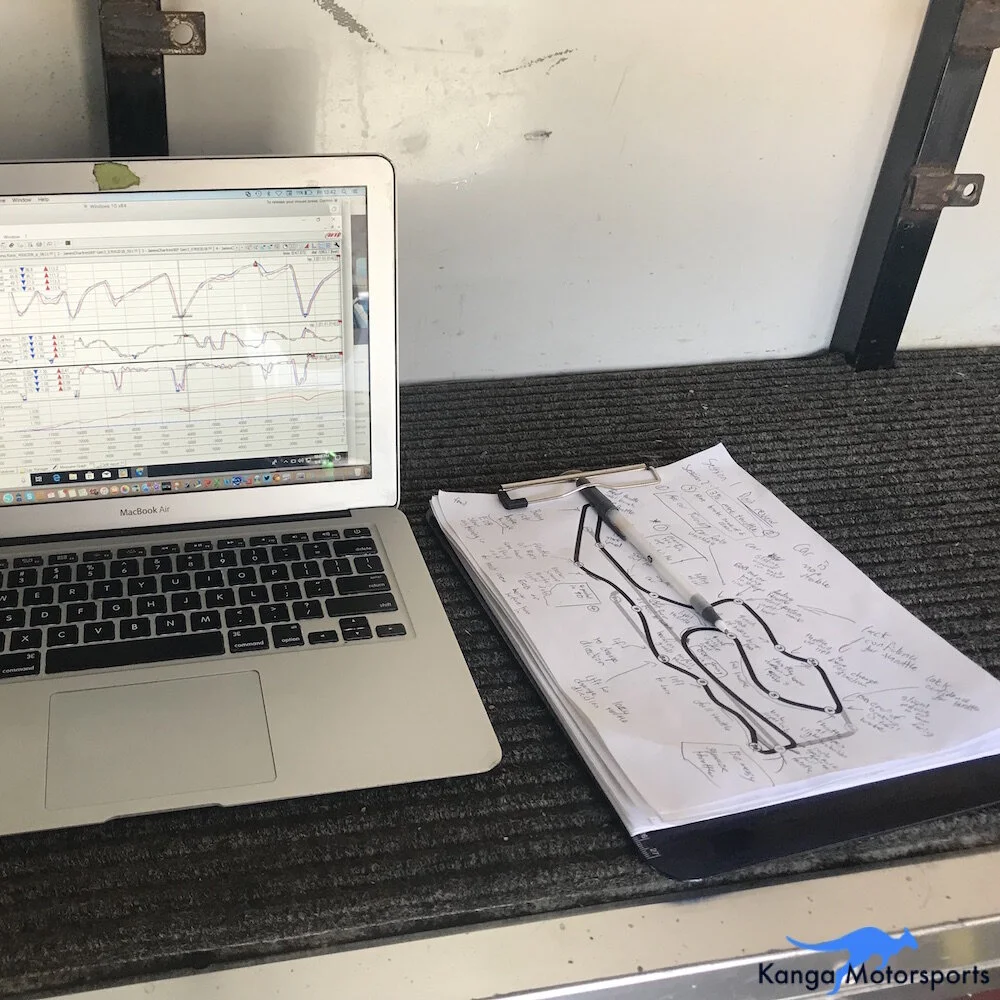Tyre or Tire anyway you spell it they are one of the most important aspects of your car. All the inputs you provide go into the tire contact patches that hopefully keep you on the track producing fast lap times. The care and maintenance of your tires on and off the track is important to your overall performance. The following tips should help keep your tires in great condition:
Keep them out of the sun
We have all seen stacks of tires at the track as people are switching between practice, qualifying and race tires. Leaving the tires out in direct sunlight exposes them to the suns heat and Ultra Violet (UV) light that breaks down the rubber polymers. Leaving race tires out in the sun will result in them degrading faster than usual and consequently reduced performance.
Keep them warm
Don't store tires in freezing or below freezing temperatures. Frozen tires can result in cracks and unsafe conditions. If you are storing them long term place them in dark garbage bags, find a cool dry place and reduce the air pressure or dismount the tires. The generally recommend temperature range is 40-90 degrees F ( 5-32 degrees C).
Tire pressures are critical
Learning to set you tire pressures is a key setup parameter for your car, as tire pressures can have a big impact on your grip levels. Most manufactures will specify a range for hot tire pressures, for the Hoosiers used on Spec Racer Fords it is 24-26 psi. You can set your cold tire pressures at a known value before you go out. As you drive and generate heat the tire pressure will increase providing the hot tire pressure values. When you come off the track first thing you should do is collect your hot tire pressures and record them. If they are too high you can lower them to your desired pressure. If they are too low you can raise the pressure to compensate by adding air. You will find at different tracks and temperatures that you will have to set the pressures differently. For example if it is cold out vs hot out the initial set pressure will be different. If the track is counterclockwise vs clockwise then your left and right tires might be different. After a few sessions you will be able to tell just how much of a jump in pressure from hot to cold will occur. You can then fine tune your cold pressures to give you the desired hot pressure on track. I find cold set pressures are generally 18, 18.5 or 19 psi depending on conditions and track. Without getting into the math, a good rule of thumb is the tire pressure will increase by 1 psi for every 10 degrees F of temperature increase. Before you go out for every session you should check the tires to see if any of the pressures are drastically different as you might have a leaking tire without knowing it.
Track heat cycles
Race tires are different than street tires. While race tires do wear out like street tires you shouldn't necessarily use them until they are worn out. Race tires can "cycle" out or reduce performance after a certain number of heat cycles. A heat cycle is defined as using a tire on track, taking it from cold to hot and back to cold. This cycle of heat can result in a hardening of the rubber compounds and reduced performance. Some race tires only have a 4-8 heat cycles before they start to lose performance. In some cases there might even be "golden" cycles, improved performance for just 1 or 2 cycles in the tires life. We are lucky in Spec Racer Ford as the new Hoosier tires seem to have even performance all the way up to 12+ heat cycles. The Hoosier SRF tires seem to be the exception to the rule with some racers using them until wear out. I track heat cycles by using tally marks or cross hatch counting on the sidewalls. I have seen other people use dots on the sidewalls or straight up writing it down in their notes. Either way you should keep track of your heat cycles to tell when the performance of your tires drop off and for planning future tire purchases.
Swap Left to Right
For Spec Racer Ford we use a staggered tire size, front tires smaller than the rear. On tracks that are counterclockwise we notice lots of wear on the outside right hand tires and less on the left. To even out the wear we swap them side to side every 2-3 session. This also prolongs the life of the tires and helps save some $$$.
When to use wets?
Sometimes the choice is easy, sometimes the choice is hard. Sometimes the risky ones are rewarded with a drying track or sudden downpour. Other times they are left behind struggling for grip. In general if you are seeing standing water on the track or increasing rain then it is time for wet weather tires. If the track just looks damp but there isn't standing water than you can get away with slicks and being smooth. Another tool you can use to predict the rain is the weather radar map. After a few times in the wet you will get better at reading the surface but sometimes it comes down to luck as you can't always predict what the weather will bring. In either case don't avoid damp or wet conditions these are great opportunities to get some practice and improve your smoothness on the track.
















Want to be faster at the track? We share our tips and tricks on reviewing your videos and improving your lap times.